NYC, Leica M6 and a pocket full of Tri-X
By Arda Ozum
A couple of years ago, I had the opportunity to walk the streets of NYC with a few friends and nothing on my agenda except to take photographs with my Leica M6. In an effort to travel light and keep things simple, I took only the Leica M6, 35mm ASPH Summicron and Tri-X film. This is my favourite camera/lens/film combination for street photography.
The Leica is a truly superb camera for this type of photography. It is small and unobtrusive and produces outstandingly sharp negatives. People are often surprised when they see a 16×20 print from a 35mm Tri-X negative because it holds up so well! I shoot Tri-X rated at iso 400 and develop in D-76 diluted 1:1 at 20 degrees C for 9.75 minutes.
I get into a great rhythm with this camera when I am shooting with it for extended periods of time. Without the distraction of menus, buttons, etc. I have a very simple tool with which to create images. I have only three things to consider: aperture, shutter and focus. I love the simplicity! I can focus on image making instead of navigating menus and settings. The viewfinder gives a view of real life as it happens. If there is daylight, I will often use hyperfocal distance to pre-focus the camera so that I can react quickly to things that are happening around me. For example, in sunny condition and relying on sunny-16 for exposure settings, I will set shutter at 1/500 and aperture at f/11. I will then set focus so that 1.5m to 10m will be in acceptable sharp focus. This allows me a nice working distance to react very quickly to what may happen in my immediate vicinity on the street. It is instant. No focus required! The photograph of the young man on the skateboard was captured with almost no warning as he came speeding past me.
In other situations, I will use the meter in the camera and the zone system to determine exposure. For example, at night, I would often meter a dark area of the street that I wanted to capture detail in and place that area in zone 2 or 3. I might also check a brighter area to ensure I wasn’t blowing out highlights. The meter in the M6 is not a spot meter so I would often pick an area in my scene that would be at least 10% of my viewfinder area and make a decision as to what zone I would place that part of my scene and set my exposure accordingly. Although everyone has different tastes, I did very little editing and in most cases, no editing of the film scans and I am happy with the way they look.
The Leica and I had some fun that week in NYC. One shot from the Empire State was shot at 1 second long using my elbows and forehead against the glass to steady the camera. One of the photos was even shot using a pint of beer as my tripod to grab a 30 second exposure of the interior of an old pub! In the week I was in NYC, I exposed 250 images and scanned 190 of them to take a closer look because they had potential. Of the 190 images scanned, I displayed about 60 of them. You can see more of the images from NYC and some of my other photography at www.photo.net/photos/Arda
Cheers!
Arda

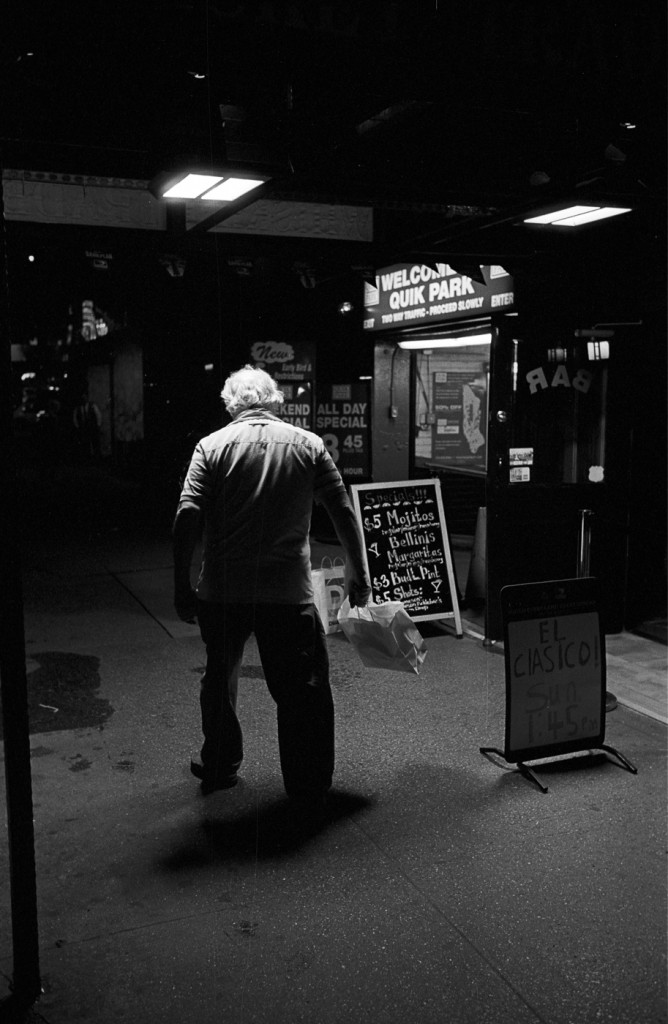
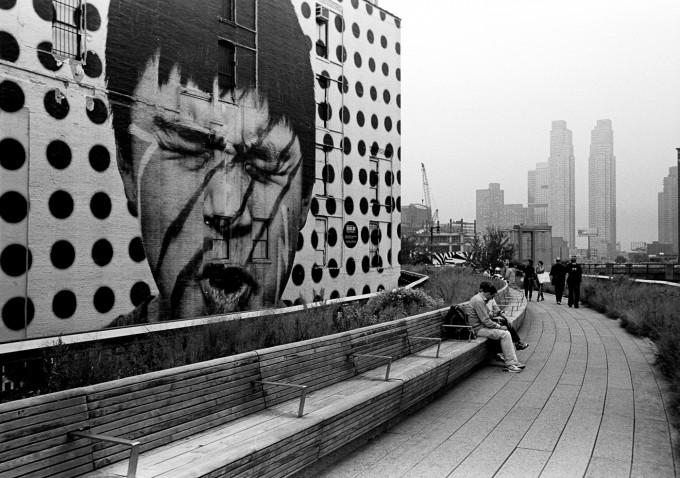
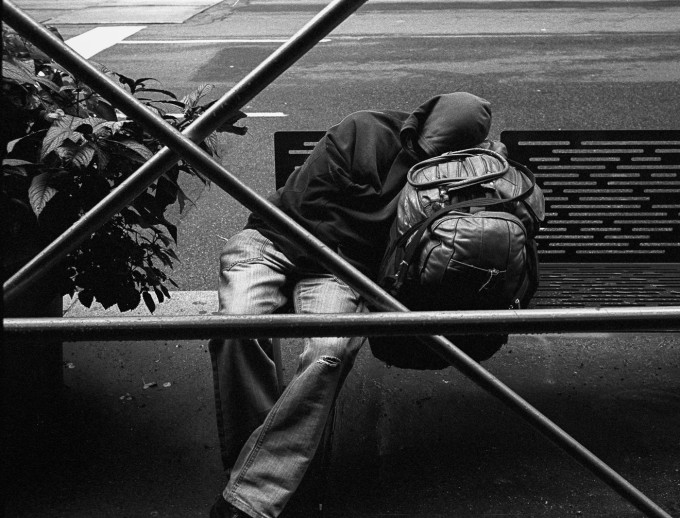
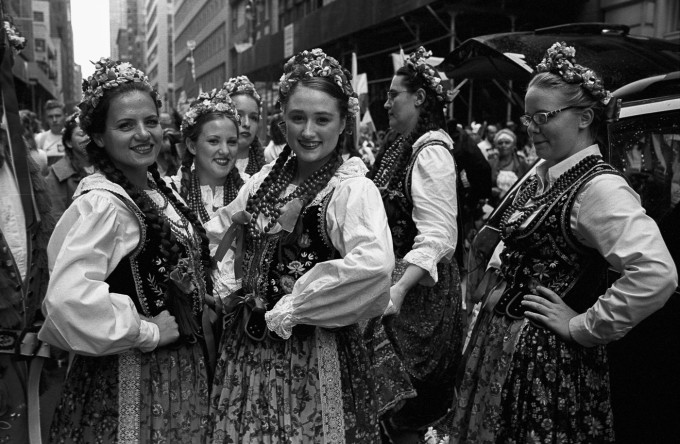
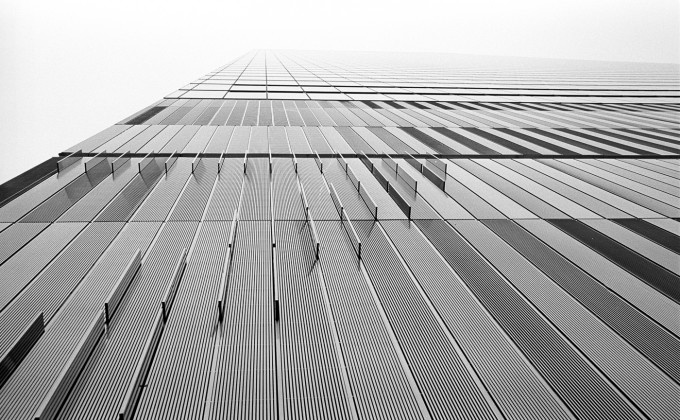
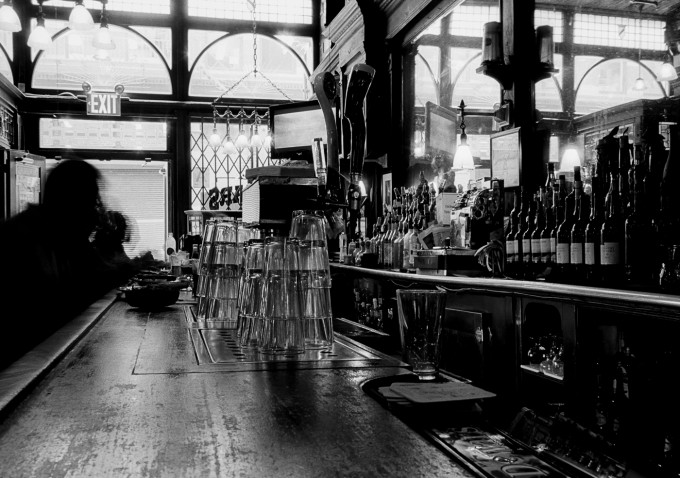
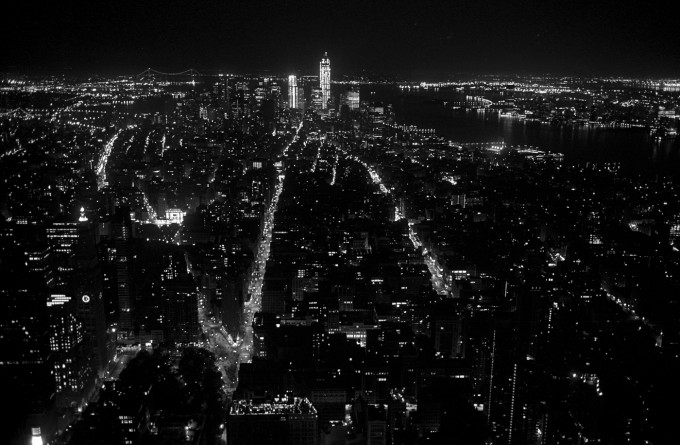
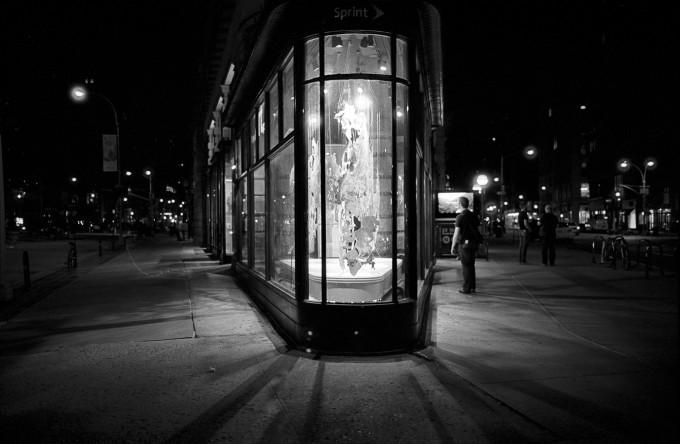


This is a good selection of pictures. Every photo gets my eyes in something, making me think.
Learning photography is much easier with digital camera, you are over some thousends picture for much less money.
oh wow lovely pictures! I must say I like them all.
My style of street photography
The scan was rejected on the basis of resolution. They wanted to print a 7 foot tall mural from a 35mm negative that was shot horizontally. That print size would result in the 1 inch dimension of the negative being enlarged 84 times to get the 7 foot mural height. The drum scan was able to get more resolution from the negative than either the V750 Pro or the Nikon Coolscan 5000. The resulting mural looked detailed and smooth. It looked like what I would have expected if I could have made a darkroom print that size.
There is a company that makes film holders that are adjustable so that you can adjust the height of the film plane in the scanner to achieve maximum sharpness. To be honest, I love printmaking in the darkroom and scanning is just a way to quickly share or upload photos so I don’t typically scan to make prints. However, I have made prints from 35mm film scans up to 16×24 inch size that look fantastic. I recently printed a 16×24 inch print from a 4 MB downsized scan and there was no perceivable loss in the image. I don’t think the average person would print larger than this and both scanners I use seem to be able to get a good enough scan to print easily up to 16×24 inch prints.
Interesting, was the Epson V750 Pro scan soft or shadow area D-Max was not good enough to be rejected? I wonder if the adjustable height film holder is good enough? i am looking film scanner for my self.
I really thank you for your precise and competent answer!
In this context I still find it very strange that most scanners around, even sort of pricey MF-scanners, don’t even have the possibility to focus on the filmgrain or even have AF. They are simply factory-adjusted to an (hopefully) average position of the filmstage. But in this range there is almost no useable depth of field.
That’s the reason why I’m contemplating about the Sony a7r II for digitizing bw negatives (35mm and 120) and / or stitching to overcome these limitations without spending a fortune.
Here we see all these extremely good images and you have to start a film/digital rant! Can’t you just sit down and enjoy the photo’s?
Sorry,
Congrats, Arda! great work.
Dirk.
Hi ARDA,
I can fully understand the point you’re making – I have a valid & rather solid (yet older) DSLR (D700) and other Digital Fuji + P/S : all pretty good, high end, super effective, sometimes (helpful) no-brainers …. But they definitely lack one thing: SOUL … Picking up an older Nikon F2, FM/E , Olympus OM or a Leica ‘M’ (just sticking to 35mm cams…) is a totally other experience to me …
And without being a “GAS”Guy I believe that feeling a strong/ positive or special bond to a Cam can indeed lead you to take more & better pictures !!
Also knowing that one does not (necessarily) exclude the other : all depending on mood, situation and job to do ..
Greets 2 all,
Jerry 🙂
1. MICHAEL , well the image quality (IQ) you’re referring to is such a thing .. Not all is about sharpness, definition .. Please also think of texture, rendering, dynamic range etc… where Film still has some strong arguments – that’s why some people are still holding on to it IMHO .. (W/o even going into the tactile/handling & retro/vintage aspects..)
2. You mixed up Manual & mechanical I believe – MARK ALLEN T wanted to underline that the M6 is thereby sturdy, reliable, always functioning, not battery dependent (exc. 4 the Meter) and always repairable into the years .. (VS. a Manual (or with meter rather ‘semi-auto’) camera setting you’re coming up with)
3. Concerning FILM : it has been around for 100 years – and will still be around in decades .. Even if the variety offered will (still) shrink and prices might (again) go up … As far as the storage is concerned Film is top and if stored well the negs will still be here in +100 years …
But where will your Hard-Drives, CF SD cards and other CDs DVDs be ?!? And mosf of all: in what state ?? And how about drivers / devices still able to read and exploit the files / content ?!? :o/ …
Just my 2 (€) cents,
Greets 2 all,
Jerry 😉 …
Love your photos and I agree with most of what you have said as I used to use a Leica M6 myself and now use an M8. I LOVE the way film renders above any digital camera. I realise this is subjective and understand if people differ.
I was recently taking a few photos at my friends daughter’s wedding and was keeping out of the pro photographers way.She remarked “Wow that camera you have was my very first camera ” -pointing to my favourite camera my Pentax K1000 !
Later on she showed me some beautiful images she had on her Iphone all done with her 6×7 Pentax film camera. She says her customers often request some photos done with film- colour and black and white are equally popular.
I used to shoot Ilford XP2 and scan with my Nikon Coolscan -the advantage is that you can use digital ice to remove dust contamination. A good tip if you prefer to shoot silver films is to scan immediately when the negs are clean and pristine.
We are lucky as photographers that we have both digital and film cameras to choose from for our different projects.
Keep posting
Michael,
*Of course* it is infinitely easier to make photographs with any digital camera–even a point-and-shoot–than it is with a manual rangefinder and film. You won’t find anyone who argues otherwise.
But people who shoot film know that the “easiest” way to do something is often not the most satisfying way. And when talking about a hobby or a passion, satisfaction counts for a lot.
Hello Michael (and Mark),
Thank you for the kind comments. I wasn’t trying to start a film vs. digital debate. It has been done to death. Photography is a hobby for me and thus, it must be fun or I wouldn’t do it. I love shooting film because it is fun and challenging. I think when I shoot film. It changes my approach to photography and I get better images (subjective but that’s how I feel). I have always been drawn to mechanical things and to have a camera that is not battery dependent, precisely manufactured, that whispers a mechanical “click” when I create an image…well, you know what I’m talking about because you have an MP! It is a beautiful thing! This camera makes me want to create images. I don’t get that urge from my digital cameras. But I do love digital; it has made every camera I ever wanted to own affordable! 😀
Hello Lothar,
I used a Nikon Coolscan 5000 to scan the negatives. At maximum settings, this scanner gives approximately 16 MB files from a detailed black and white negative. I can get a 16×24 digital print that will give darkroom print-like qualities, with a grain-like look. However, my experience shows that there is still more information on the negative that this scanner is unable to capture. A few years ago, I sold an image that was to be enlarged to 2.1 meters (7 feet) tall. I scanned the 35mm negative through both the Nikon Coolscan and also an Epson V750 Pro. The resulting scans were not good enough to make a 7 foot tall mural that would meet the client’s expectations. The printers and client rejected the file. I then found a local artist that had a drum scanner. The drum scan from the negative was 600 MB and produced an amazing 7 foot tall mural!! I was really impressed with the finished product and the detail and quality was surprising to me. That image was shot on Leica M6 with 35mm Summicron ASPH on Ilford HP5. My experience suggests that there is more information on a 35mm negative than what consumer or pro-sumer scanners are able to capture. Thank you for the kind comments.
Arda
Great photos Arda!
Really gorgeous. Keep contributing.
The only thing that is “full frame” about 35mm film is the DOF. The image quality does not begin to compare with today’s FF digital (or even APS-C). I also don’t see why being limited to manual is an advantage. Any serious digital camera can be shot in manual, semi auto, or full automatic mode, which is much better than just being limited to manual. Yes, the M6 will last a lifetime, but will film? We’ll have to see.
Here are a few advantages to the M6: it’s mechanical, it’s full frame, and it’ll last a lifetime.
Great Eye!
-Mark.
Beautiful pictures!
you combined things I like too…m6,tri-x,N.Y. and then the darkroom…Great!
I will check your site to see more!
Nice photos. Long ago I spent a lot of time with Tri-X and D-76 often shot at 1600 and push processed for night sports. Loved it for portrait and street at 400 too. Never had a Leica. Shot a Nikormat which is all I could afford at the time. Your gear is iconic “street” and must be a lot of fun.
Lovely photos
Finally we see Leica photos again
What scanner did you use for the bw scans? Does it resolve and show the film grain compareable to an enlargement made in the darkroom?
By the way: I like the tonality of your pictures.
I am glad you enjoy your set-up! But, the Leica has no empirical advantage over a digital camera mounted with a high quality lens. You may like the look of film better; that is subjective. You may enjoy the interface better, again subjective. Once I get my Sony A6000 configured to the shooting parameters I like, my shooting process also gets pared down to aperture shutter and focus, as I use the lenses from my Leica MP mounted on it. Plus I have the advantage (for me) of seeing the exposure effects while shooting (to wit: I can see which highlights need reining in).
Your photographs are amazing, Arda! Isn’t that really the bottom line, regardless of how they were captured?